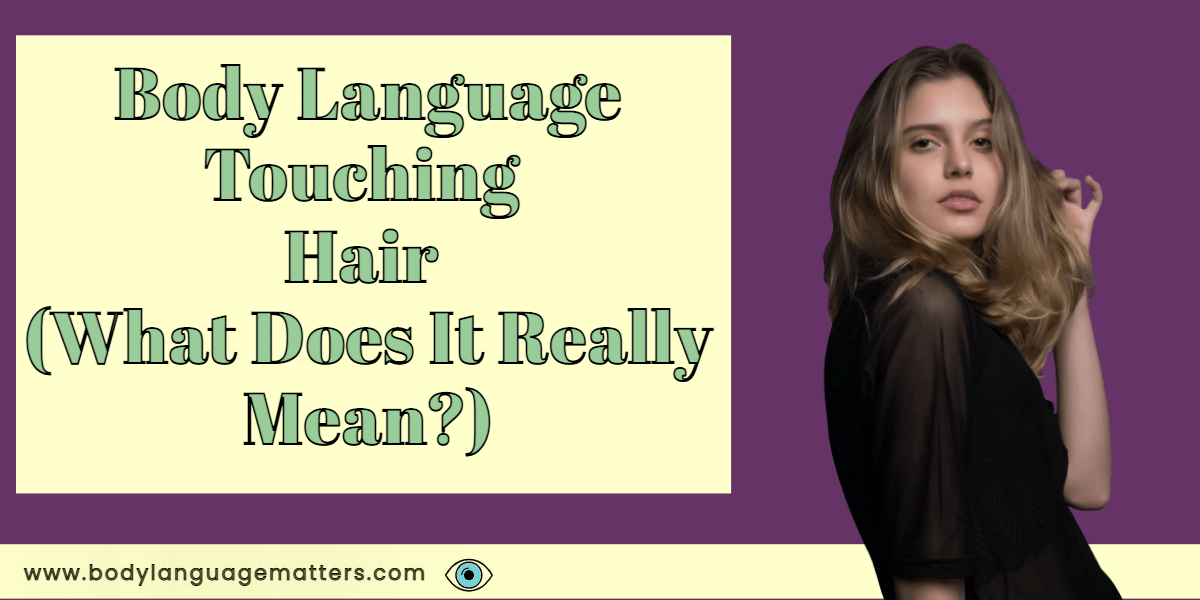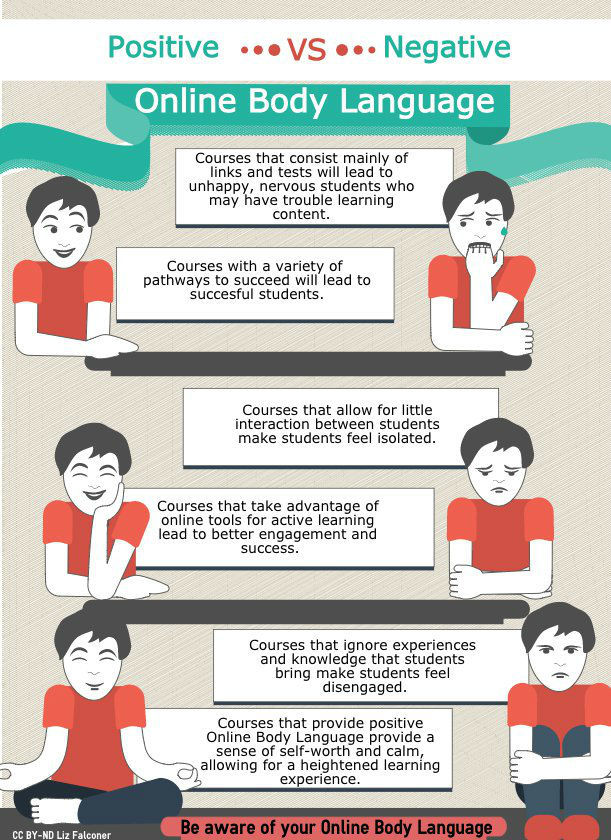Touching Your Body Language
Do you ever wonder what your body language says about you? Well, one fascinating gesture that can reveal a lot is “touching your hair.” Yes, you read that right! The way you touch your hair can convey various messages without even saying a word.
Now, you might be thinking, “How can something as simple as touching our hair communicate so much?” Well, my friend, get ready to unravel the hidden meanings behind this common action.
In this article, we’ll dive into the world of body language and explore the subtle messages behind touching your hair. So, whether you’re twirling a strand absentmindedly or trying to tame those unruly locks, get ready to decode the fascinating language that lies within your touch. Let’s get started!
Hair touching can reveal a lot about a person’s body language. Discover the hidden messages behind this common behavior and learn how to interpret them. From nervousness to flirtation, each touch carries meaning. Unravel the secrets of body language step-by-step, understanding the various signals associated with hair touching. Enhance your communication skills and decode the unspoken messages hidden within this subtle gesture.
:max_bytes(150000):strip_icc()/042016-hair-language-embed-0b4853fed0b24072ac6edbbb2db7af3b.jpg)
The Body Language of Touching Your Hair: What Does It Mean?
Body language plays a crucial role in nonverbal communication. From facial expressions to hand gestures, these cues can provide valuable insight into a person’s thoughts and emotions. One specific form of body language that often goes unnoticed is the act of touching your hair. In this article, we will explore the meaning behind this action and what it reveals about an individual’s state of mind.
The Subconscious Gesture: Uncovering the Unconscious
When it comes to body language, actions often speak louder than words. This is especially true for subconscious gestures like touching your hair. The act of running your fingers through your locks or twirling a strand can be an indication of nervousness, anxiety, or even insecurity. It serves as a self-soothing mechanism, similar to how a child may suck their thumb. However, it is essential to note that context is key. Someone may also touch their hair as a flirtatious gesture or even as a way to draw attention to themselves. Overall, understanding the underlying emotions behind this action requires careful observation and analysis of the situation.
While touching one’s hair can signal insecurity or nervousness, it can also signify confidence and self-assurance. For some, hair-touching may be an unconscious way to showcase their attractiveness or seek validation. It can become a subconscious attempt to draw attention to one’s appearance, particularly when engaged in interactions or when trying to make a positive impression. By recognizing the motives behind this gesture, we can gain a better understanding of a person’s intentions and emotional state.
The Different Meanings: A Multi-Dimensional Gesture
Just as body language is complex and multifaceted, so too are the meanings behind the gesture of touching the hair. Depending on the individual and the context, this action can convey a variety of messages. For some, it may be a sign of flirtation or even seduction, particularly when combined with other subtle cues like maintaining eye contact or smiling coyly. On the other hand, touching one’s hair can also be a self-soothing mechanism, indicating feelings of unease or discomfort.
Additionally, the meaning behind hair-touching can vary across different cultures and social contexts. In some societies, it may be perceived as flirtatious or provocative, while in others, it may be seen as a sign of attentiveness or engagement. It is crucial to consider cultural norms and individual differences when deciphering the meaning behind this subtle yet powerful gesture.
Interpreting the Context: Factors to Consider
Understanding the true meaning behind touching your hair requires careful consideration of various factors. These include the individual’s overall body language, the specific situation, and the consistency of the gesture. Is the person fidgeting or displaying other signs of anxiety? Are they touching their hair in moments of stress or discomfort? By analyzing the bigger picture, you can gain valuable insights into someone’s emotional state and intentions.
It’s also important to consider the frequency and duration of hair-touching. Occasional touching may be more indicative of a subconscious gesture, while excessive or repetitive actions could suggest a deliberate attempt to draw attention. Moreover, observing any changes in behavior before and after hair-touching can provide additional context. Does the person seem more self-assured or confident after this gesture? This careful analysis can help decipher the true meaning behind this fascinating body language cue.
The Impact of Gender and Hairstyles
It’s worth noting that gender and hairstyles can also influence the meaning behind hair-touching body language. For example, women with long hair may touch their hair more frequently than those with short hair, as there is simply more hair to interact with. Furthermore, societal expectations and cultural norms may shape how hair-touching is interpreted for different genders.
For instance, men may often touch their hair as a way to groom or adjust their hairstyle. This can be seen as a confidence-boosting action or even as an attempt to appear more attractive. On the other hand, women’s hair-touching may be seen as a subtle sign of femininity or a way to enhance their physical attractiveness. Understanding the nuances of gender and cultural norms is essential to accurately interpret the message behind hair-touching body language.
Tips for Decoding Hair-Touching Body Language
Deciphering the true meaning behind hair-touching body language requires keen observation and attention to detail. Here are a few tips to help you decode this intriguing nonverbal cue:
- Pay attention to patterns: Look for recurring instances of hair-touching, especially in specific situations or with particular individuals.
- Consider the context: Analyze the surrounding environment, the person’s overall demeanor, and any potential triggers for anxiety or discomfort.
- Observe other body language cues: Take note of facial expressions, hand movements, and posture to gain a comprehensive understanding of the person’s emotional state.
- Consider cultural and gender norms: Be aware of cultural differences and societal expectations that may influence the interpretation of hair-touching body language.
- Practice active listening: While body language can provide valuable insights, it should always be considered in conjunction with verbal communication. Listen to what the person is saying to gather a holistic understanding of their thoughts and emotions.
Conclusion
Body language is a powerful tool that often speaks volumes without uttering a single word. The gesture of touching your hair is no exception. Whether it signifies nervousness, self-assurance, or flirtation depends on various factors such as context, individual differences, and cultural norms. By paying attention to these subtleties and incorporating active observation, we can decode the hidden messages behind this captivating form of nonverbal communication.
Key Takeaways – Touching Your Hair Body Language
- Touching your hair can be a sign of nervousness or anxiety.
- It can also indicate self-consciousness or a desire for attention.
- Be aware that excessive hair touching can be seen as a negative body language gesture.
- Pay attention to the context and other body language signals to interpret the meaning behind hair touching.
- Remember that body language is not always definitive and can vary from person to person.
Frequently Asked Questions
Body language can often reveal our subconscious thoughts and emotions. One particular behavior that is often analyzed is touching your hair. Explore these common questions and answers related to this intriguing aspect of body language.
Q1: Why do people touch their hair when they are nervous or anxious?
A1: When we feel nervous or anxious, our body produces stress hormones that can cause physical sensations like sweaty palms or an increased heart rate. Touching our hair is a self-soothing gesture that helps to comfort us and provide a sense of security. It’s a subconscious way of channeling our nervous energy and finding temporary relief from stress or anxiety.
It’s important to note that not everyone touches their hair when they’re nervous or anxious. People have individual body language cues, so it’s essential to observe a person’s overall behavior and context to make accurate interpretations.
Q2: Is there a difference in hair-touching body language between men and women?
A2: Hair-touching body language can vary between individuals, regardless of gender. However, research suggests that women tend to touch their hair more frequently than men. This could be influenced by societal factors, personal habits, or hair length and style. Women may use hair-touching as a way to convey femininity or to catch someone’s attention.
It’s essential not to make generalizations based on gender alone. Different individuals may have unique reasons for touching their hair, and it’s crucial to consider the individual’s overall behavior and context when interpreting body language cues.
Q3: Can touching your hair be a sign of flirtation?
A3: Touching one’s hair can sometimes be a subtle gesture of flirtation. It might indicate a person’s attempt to draw attention to themselves or appear more attractive. However, it’s important to remember that body language can have multiple interpretations, and hair-touching alone should not be taken as a definitive sign of flirtation.
When assessing someone’s interest, consider the overall context, their other body language cues, and verbal communication to avoid misinterpretation.
Q4: Are there cultural differences in hair-touching body language?
A4: Cultural norms and personal habits can influence hair-touching body language. In some cultures, touching one’s hair might be seen as a flirtatious or provocative gesture, while in others, it may be a sign of confidence or simply a subconscious habit. It’s essential to be mindful of cultural differences and avoid making assumptions based solely on a person’s hair-touching behavior.
When interpreting body language, always consider the individual’s cultural background, personal habits, and the specific context in which the behavior occurs.
Q5: Can touching your hair be a sign of boredom or disinterest?
A5: Although hair-touching can sometimes be associated with boredom or disinterest, it should not be considered a definitive indication on its own. Different individuals have unique body language cues, and some people may touch their hair out of habit or as a self-soothing gesture, even if they are fully engaged in the conversation or activity. It’s essential to look for additional signs of disinterest, such as lack of eye contact or fidgeting, to get a more accurate understanding of someone’s level of engagement.
To accurately interpret someone’s body language, observe their overall behavior and consider the context in which the hair-touching occurs.

7 Subconscious Signals She Likes You (live examples!)
Summary
When we touch our hair, it can reveal different emotions or intentions. Scratching our scalp might mean we’re thinking hard or feeling stressed. Twirling our hair can indicate we’re nervous or flirting. Playing with our hair in public can attract attention. Yet, we should be mindful not to touch our hair excessively as it can be distracting and give off negative impressions. Remember, body language can say a lot without us even saying a word!
To better interpret hair-touching gestures, we should consider the context and other cues. Touching hair can have various meanings based on cultural differences and personal habits. So, it’s essential to be aware of our own body language, as well as to pay attention to others’. Understanding these nonverbal cues can help us communicate better and build stronger relationships.
